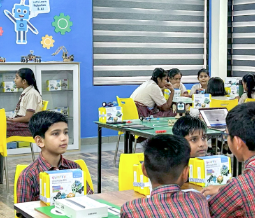Introduction
STEM education—focused on science, technology, engineering, and mathematics—prepares students for innovation, critical thinking, and problem-solving in an increasingly complex world. Personalized learning enhances STEM instruction by adapting content and pacing to individual students’ interests and abilities. When STEM education is personalized, learners become more engaged, confident, and equipped to explore advanced concepts with curiosity and creativity.
1. Boosting Engagement Through Relevant Content
Personalized learning allows students to explore STEM topics that interest them, such as robotics, coding, environmental science, or space exploration. This relevance sparks enthusiasm and makes STEM more accessible. When students see real-world connections, their motivation to learn deepens.
2. Supporting Diverse Learning Styles
In STEM fields, students benefit from hands-on activities, visual simulations, collaborative experiments, and digital modeling tools. Personalized learning supports these varied approaches, ensuring that every student can grasp complex concepts in a way that fits their unique learning style.
3. Encouraging Problem-Based and Project-Based Learning
Personalized STEM education often includes inquiry-driven projects where students investigate questions, solve real-world problems, or build prototypes. These experiences foster innovation and critical thinking while allowing students to progress at their own pace and pursue projects that align with their passions.
4. Developing Confidence in Technical Skills
By moving at a personalized pace, students have time to build a strong foundation in technical subjects. This helps reduce frustration and builds confidence, especially for learners who may struggle in traditional STEM classrooms. Adaptive tools and feedback loops guide learners without overwhelming them.
5. Promoting Equity and Inclusion
Personalized STEM learning creates space for all students to succeed, including those from underrepresented groups. It helps address individual gaps in understanding and provides differentiated support, ensuring that every student has access to opportunities in STEM fields.
6. Strengthening Future-Ready Skills
STEM careers require collaboration, problem-solving, adaptability, and digital literacy. Personalized learning environments help students practice these skills by encouraging goal setting, reflection, and the use of modern tools and technologies in authentic learning tasks.
Conclusion
Personalized learning transforms STEM education into a more inclusive, engaging, and effective experience. By honoring each student’s pace, interests, and learning style, educators can foster deeper understanding and a lasting enthusiasm for science, technology, engineering, and math. With thoughtful implementation, personalized learning helps prepare today’s students to become tomorrow’s STEM leaders.













